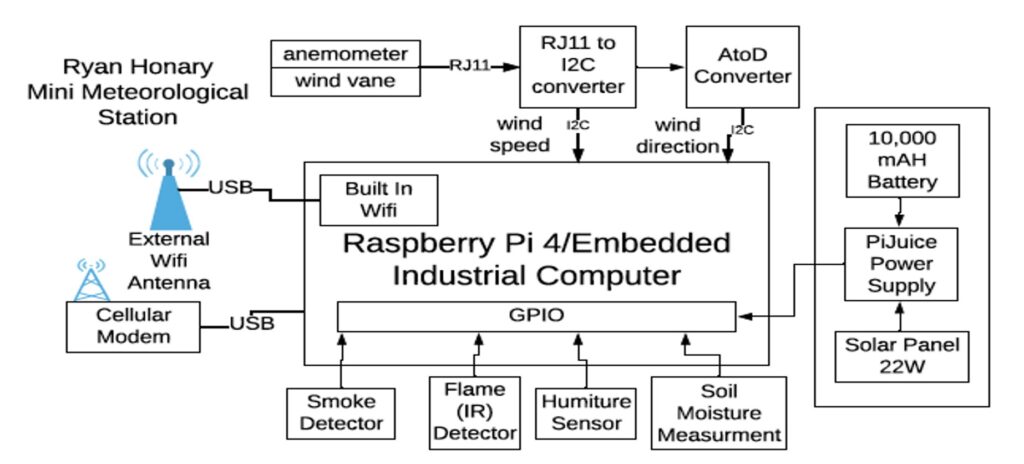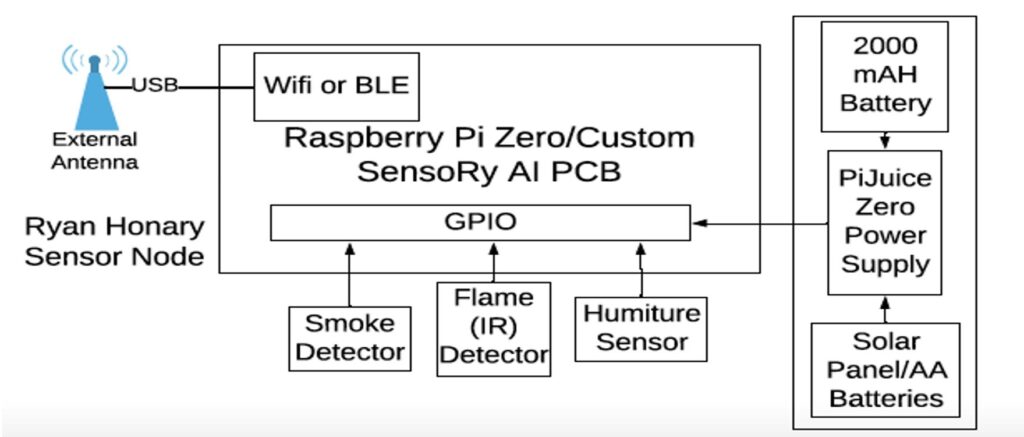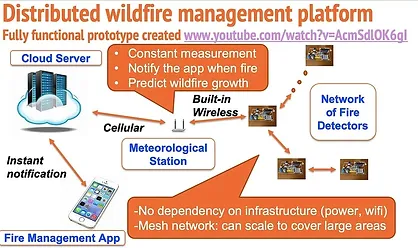Our Technology
Our Technology
Sensory ai
Sensory ai
Environmental platform
Ryan has created an open version of the SensoryAI environmental research platform that can be accessed by any youth to facilitate environmental problem solving.
Additionally, CSS members will be provided with Raspberry Pi technology, as well comprehensive training on how to leverage these resources to make an impact.
The Technology
The Technology


Components
Raspberry Pi 4 Setup
- Central Unit: Raspberry Pi 4
- Power: Powered by a battery and solar panel.
- Connectivity: Built-in WiFi and an external WiFi antenna connected via USB. Additionally, a USB cellular modem with an external antenna.
- Sensors:
- Micro Meteorological Station.
- An anemometer to measure wind speed and wind direction. This anemometer is connected to an R011 to I2C converter which then connects to the Raspberry Pi.
- Smoke Detector
- Flame (IR) Detector
- Humiture Sensor for measuring humidity and temperature.
- Soil Moisture Measurement tool.
- Other Components:
- A GPIO (General-Purpose Input/Output) interface.
- A Puljuce power supply
Raspberry Pi Zero Setup
- Central Unit: Raspberry Pi Zero
- Power: Powered by a battery and solar panel.
- Connectivity: Built-in WiFi and an external WiFi antenna.
- Sensors:
- Fire Detector .
- Flame (IR) Detector
- Humiture Sensor.
- Other Components: A GPIO (General-Purpose Input/Output) interface

How it Works
Cloud Server
- Functions:
- Engages in constant measurement
- Notifies the associated app in the event of a fire
- Has the capability to predict wildfire growth.
- Connectivity:
- Communicates with the Meteorological Station and Network of Fire Detectors. This communication is facilitated through built-in wireless technology.
Meteorological Station
- Positioned to measure and send various meteorological data.
- Transmits information via cellular networks and built-in wireless to the Cloud Server.
Network of Fire Detectors
- Multiple fire detectors are spread out in an area.
- They form a mesh network, allowing them to scale and cover large regions.
- They possess no dependency on traditional infrastructure like power and WiFi, implying they’re self-sustained and can function in remote areas.
- These detectors relay fire-related information to the Cloud Server.
Fire Management App
- A mobile application depicted by a smartphone icon.
- Receives instant notifications, likely regarding fire detections or updates.
- The notifications are routed through the cellular network from the Cloud Server.
